Traditional Braces – DeSoto, TX
The Most Effective Method for Straightening Teeth
If you’ve been wanting to straighten your smile due to problems like gapped or crooked teeth, then you’ve likely heard of various orthodontic treatments to consider. Though there are several processes out there to choose from, most dentists agree the most effective method is with traditional braces. This treatment process can help patients of all ages and is designed to correct even the most complex orthodontic issues out there. Read on or give our team a call today to schedule your initial consultation!
Why Choose Amaze Dental for Traditional Braces?
- Utilize Fast Braces® for a Quicker Process
- Professional & Highly-Trained Dental Team
- Dedicated, Experienced, & Caring Dentists
How Do Traditional Braces Work?

By cementing metal brackets to your teeth and connecting them with wires, we can gradually shift your smile into better alignment over time. During each adjustment visit, your dentist will tighten the wires to allow your teeth to move closer and closer to their ideal positions. Some patients require attachments and additional accessories, such as elastic bands, to ensure their results are perfect. We’ll walk you through the process and discuss what you can expect throughout your treatment process.
What Orthodontic Issues Can Braces Fix?

Here are some of the common orthodontic problems metal braces can address:
Bite Misalignment
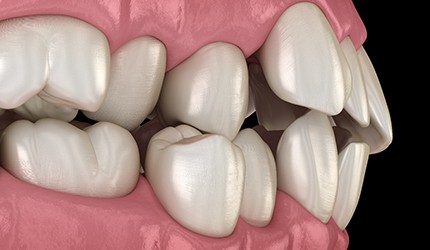
If the jaw doesn’t come together, it can result in issues like underbites, overbites, and crossbites. This can make daily tasks challenging, such as eating comfortably and speaking clearly. Traditional braces can effectively guide your jaws into better alignment.
Crowded & Crooked Teeth
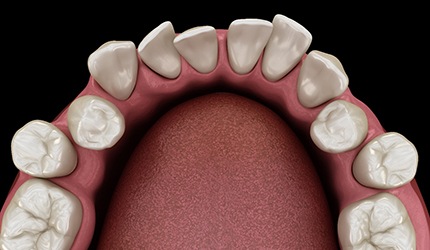
Crooked or overlapping teeth can increase your chances of oral health complications like gingivitis and decay. By straightening them with braces, you’ll be able to clean your smile of any debris, food particles, and bacteria more thoroughly in the long run.
Gapped Teeth
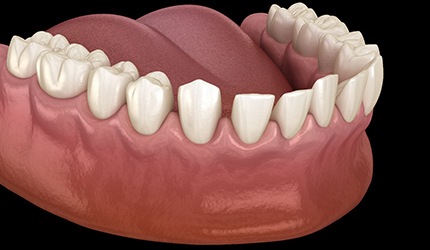
Having gaps between your teeth can make you self-conscious as well as leave them vulnerable to damage and bacteria. Moving them closer together with braces can make them more uniform and more secure.
Caring for Your Braces
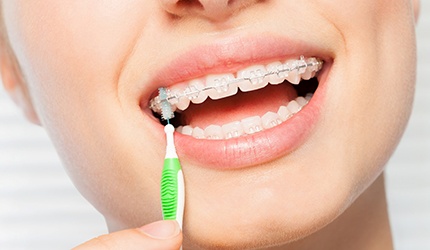
To preserve your braces and oral health during your orthodontic treatment, you’ll want to practice these few tips:
- Brush, floss, and rinse with mouthwash every day
- Use interdental flossers to clean between brackets and wires
- Avoid biting into hard objects, like ice and popcorn
- Stay away from tough, sticky, and sugary treats and drinks
- See your dentist bi-annually for checkups and cleanings
Understanding the Cost of Traditional Braces

You know that traditional braces can give you the straight smile you’ve always wanted, but how much does it cost? Since every smile is unique, there isn’t a set fee. However, in general, many treatments begin at $3,000. Although we will provide you with a more precise estimate at your consultation, you can also read on to learn more about the topic before your visit.
Factors That Affect the Cost of Traditional Braces
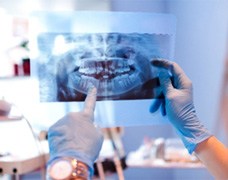
As mentioned above, each smile is unique. That’s why our DeSoto dentists will need to take several factors into account before creating your treatment plan, including:
- If you need to straighten one arch of teeth or both
- How severe your misalignment is
- If rubber bands, head gear, or any other orthodontic accessories are needed
- Your age (the older you are, the longer it can take to move your teeth)
Professional Braces vs. "DIY" Braces: Which Costs More?
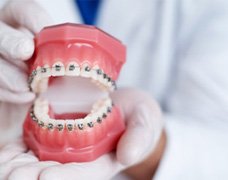
Many patients are drawn to DIY braces due to the lower upfront cost. It’s important to remember, however, that many patients who have chosen these treatment alternatives have experienced worsened misalignment, which can be costly to correct. Plus, the steps that are skipped with DIY alternatives (like the initial consultation) can have disastrous effects on your oral health. So, while each patient has a unique smile, the best choice is always to choose professional braces.
Does Dental Insurance Cover Braces?

Some patients do have a once-in-a-lifetime orthodontic benefit. Although the exact coverage varies, this typically means that the insurance provider will pay upwards of 50% of the cost. Again, dental plans vary from patient to patient, which is why it’s so important to review the fine print on yours. If you’re having trouble understanding your coverage, don’t hesitate to reach out to your provider directly or ask our team for help. We have extensive experience working with popular dental insurances, and we can help you find the answers you’re looking for.
Options for Making Braces Affordable

Patients in DeSoto will be happy to hear that we take several steps to make your treatment more affordable. To begin, we offer a free consultation! We also proudly welcome alternative financing (through CareCredit and LendingClub) and have an in-house membership plan—all of which can help make your orthodontic procedure work within your budget. So, if you are interested in learning more about the cost of your treatment and what financial solutions are available to you, don’t hesitate to give us a call.
Traditional Braces FAQs
Am I Too Old to Get Braces?
While braces are associated with kids and teens, they don’t have an upper age limit. Adults of all life stages – even seniors – can qualify for them. That said, there are a few things to keep in mind.
Firstly, an adult’s teeth are more firmly embedded in the jaw than a child’s. (Their surrounding bone tissue has had more time to solidify.) As such, braces take longer to move the former. You should thus expect a lengthier treatment time.
Furthermore, your dental insurance may not apply to care. Many plans partially cover braces for kids but not those for adults. Consequently, your out-of-pocket expense might be larger. (Should that happen, though, our office has financing options that can help.)
Can I Get Traditional Braces on Just My Top or Bottom Teeth?
Braces for only upper or lower teeth might seem convenient. However, dentists rarely recommend this option. Its potential downsides are quite significant.
The problem is that braces are designed to align both arches. Namely, they work best when moving the top and bottom teeth simultaneously. If you only shift one arch and not the other, you may suffer adverse health effects. In particular, your rows of teeth probably won’t align correctly.
For example, say you already have a slight underbite or overbite. By moving only one row of teeth, a single-arch treatment with braces could worsen the issue. You’re then likely to suffer chewing difficulties, TMJ disorder, or teeth grinding.
Do Traditional Braces Hurt?
The placing of braces on your teeth doesn’t hurt. (Dentists ensure the process is smooth and comfortable.) However, you may feel sore in the days afterward. Your teeth and gums, after all, will need time to adjust. Furthermore, your dentist will need to tighten your braces every few weeks; this can cause pain.
Still, aches from braces aren’t that troublesome. They fade quickly and can be managed with over-the-counter pain relievers. Plus, orthodontic wax can keep brackets and wires from rubbing your soft mouth tissues.
What Happens After You Get Your Braces Off?
Technically, the smile-straightening journey doesn’t end when braces come off. It simply moves into its next phase.
You see, your now-straight teeth will turn crooked again if left alone. There wouldn’t be any force keeping them in their new positions. To prevent that outcome, you’ll need a retainer – an appliance that preserves your treatment results.
How long you should wear a retainer varies. For the first few weeks after the braces treatment, it must be on your teeth nearly 24/7. Over time, though, you’ll likely only need to wear it at night as you sleep.